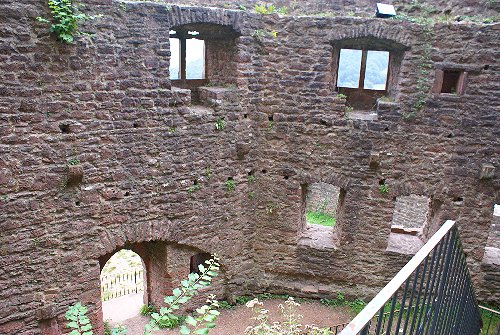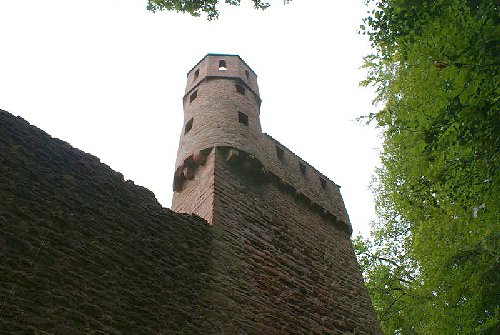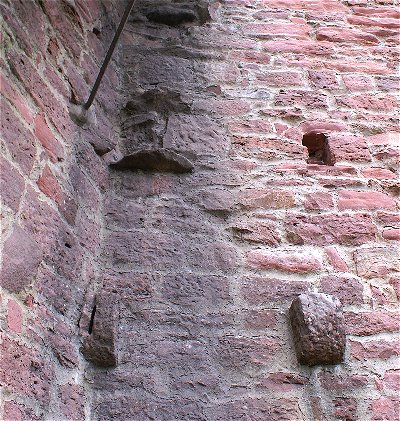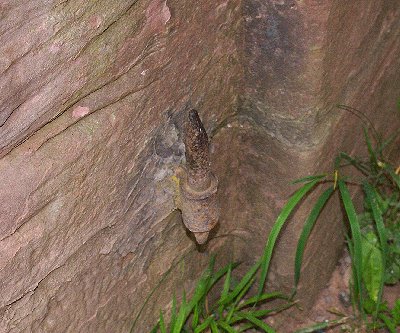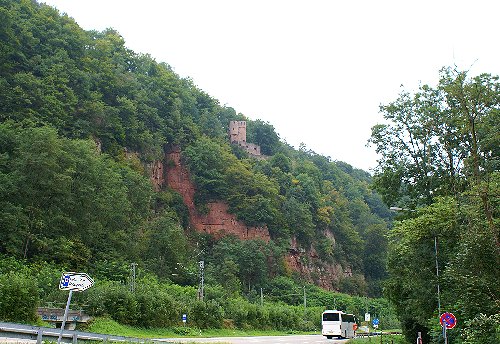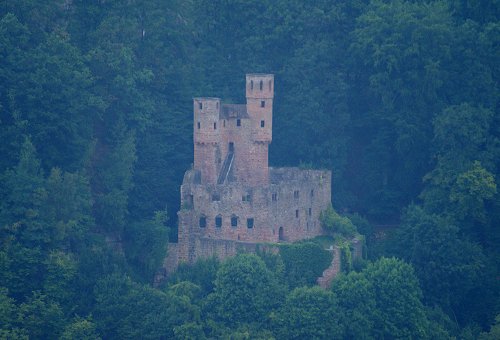Left, a close view of part of the residential quarters, including its main entrance. Visible are the stone floor supports to hold the joists of the wooden floor for the second story. Of interest are the second story windows. While not necessarily designed for fighting (they are too wide), they are certainly designed for admiring the view of the river below, and is a clear indication that the designer of the castle had more than just defense fortifications in mind. Moreover, the raised "notches" at the windows are actually seats that allow two people (or perhaps two side by side) to sit and watch the beauty of the river.
Lower left, a view of an icon holder along the wall just below the stairs. The icon itself is virtually indistinguishable, but the small platform for it is still intact.
Despite being cold and clammy, designers still tried to incorporate asthetics in their construction to accomodate refined taste.
Below, at the main entrance to the inner ward, one can still find one of the iron hinges for the gate. Cement work on the wall indicates this item was a replacement, but it could well be a few hundred years old.
Though asthetics might be an issue with designers, defense was still a prime consideration, and various aspects of this were subtly built into the design. For example, at left we see the north tower from the dry moat. What is of interest is the slight overhang of the upper landing of the dual curtain wall. This had two functions. First, it allowed for the use of stone supports to hold the stone, and not wooden, floor. This made the tower virtually impervious to attack by flaming missiles. But the second effect was to make scaling by ladders difficult. If ladders were used they would have to be the right height to reach the windows. Failing this, the top of the ladder would end up under the overhang, making it virtually impossible for an assailant to grapple and then rope his way in.
Right, a view of Schadeck from down river (the western side) gives one a good idea of its defensive location. The castle was built near a large cliff offering it additional protection from any assailants moving on or along the river. Moving cross country through the woods of the hills above was not as easy 700 years ago as it is today.
Below, a nice view of Schadeck from across the Neckar. This photo was taken in 2008 from the castle in Dilsberg.
